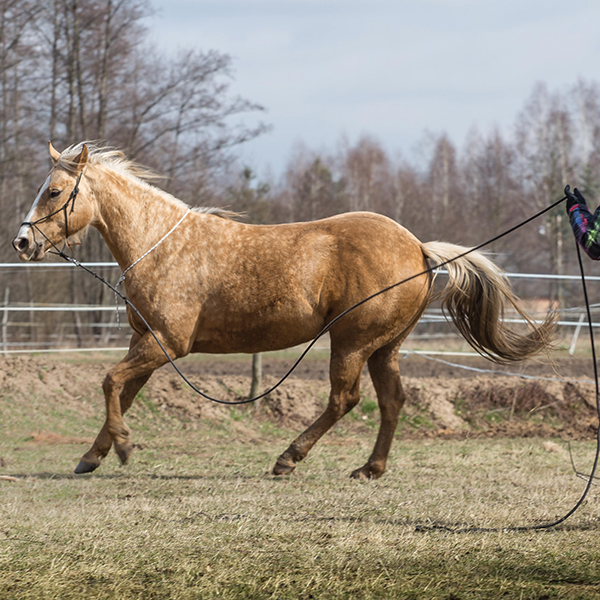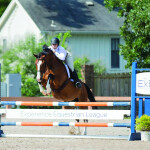Some horses can sit all winter and pick up right where they left off; however, some horses need consistent groundwork if not being ridden. If you don’t enjoy riding when the temperatures fall as much as you did a few months ago, but you do want to keep your horse tuned up throughout the winter and early spring, lunging and groundwork are ways you you can achieve your goals.
If you are unfamiliar with lunging or groundwork in general, a quick, online search can help you prepare. Local horse trainer and owner of Broken Wheel Ranch in Trenton, Tenn., Mindi Harrison, reminds us: “Any equipment can be harmful in the wrong hands.” This includes a lunge line and whip, so understand your purpose and the intent behind your groundwork before you get started. This will make the training more enjoyable for both you and your horse.
Brittany Stang, barrel racer and horse trainer, recommends starting with the basics. First, she says, “Know your horse.” Begin by assessing your horse’s body condition and nutritional needs. Make sure “you are feeding properly to keep up with colder temperatures and exercise,” she states. Take into consideration the increased metabolic demands the winter temperatures place on your horse. Brittany suggests speaking with an equine nutritionist if needed.
Ulcers can be a cause for concern in the winter time due to a lack of grass. If your horses don’t have free access to hay or forage, Stang suggests feeding hay before lunging to help the stomach acid neutralize and prevent ulcers or a flare up for those horses who are prone to ulcers.
Once you have assessed your horse’s nutritional needs, you need to determine the goals of your lunging and groundwork- in what areas would you like to see improvements in your horse? Tailor your training to fit the purpose of your horse: a performance horse will need different training techniques than a trail horse. For example, Brittany works on “slow work with simple mental tasks” with her horses still in training for barrels. However, with her finished barrel horses who need to keep their muscle condition throughout the winter, she may lunge for 15-20 minutes per session, 2-3 times a week, depending on ground and weather conditions. On the other hand, a trail horse may not need as much lunging, but rather new buttons added through groundwork over the colder winter months, such as side passing.
Whatever the purpose behind your groundwork this winter, Brittany states it is important to keep it fun and interesting. Routine can cause boredom for both you and your equine partner. Adding in desensitization days during which you expose your horse to scenarios it may see at a show, in the arena, or on a trail can be helpful and will keep your horse’s mind sharp. Regardless of what type of riding your horse is used for, focusing on “keeping the horse soft through light conditioning” is important, Brittany adds.
If you notice a behavioral problem when working with your horse, Mindi Harrison urges you to “fix the horse right then and there [through groundwork] so it doesn’t snowball into a bigger problem.” Taking the time to work with your horse on the ground can correct disrespectful behavior in your horse. It’s important to remember whatever you do with the horse on the ground translates into the saddle.
Groundwork and lunging this winter can be great ways to strengthen your relationship with your horse. Learning new things while building trust will be beneficial for both you and your equine partner.









